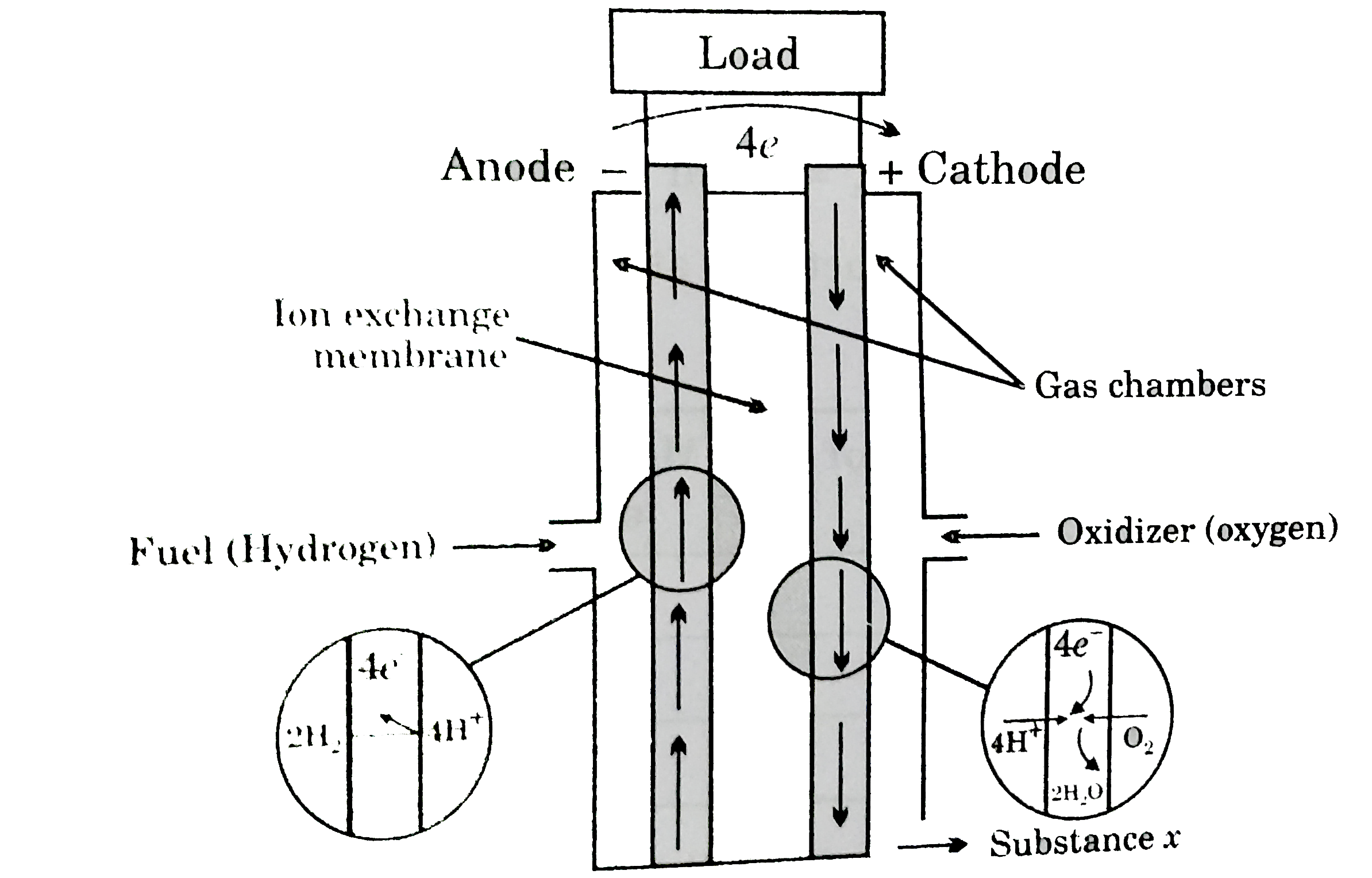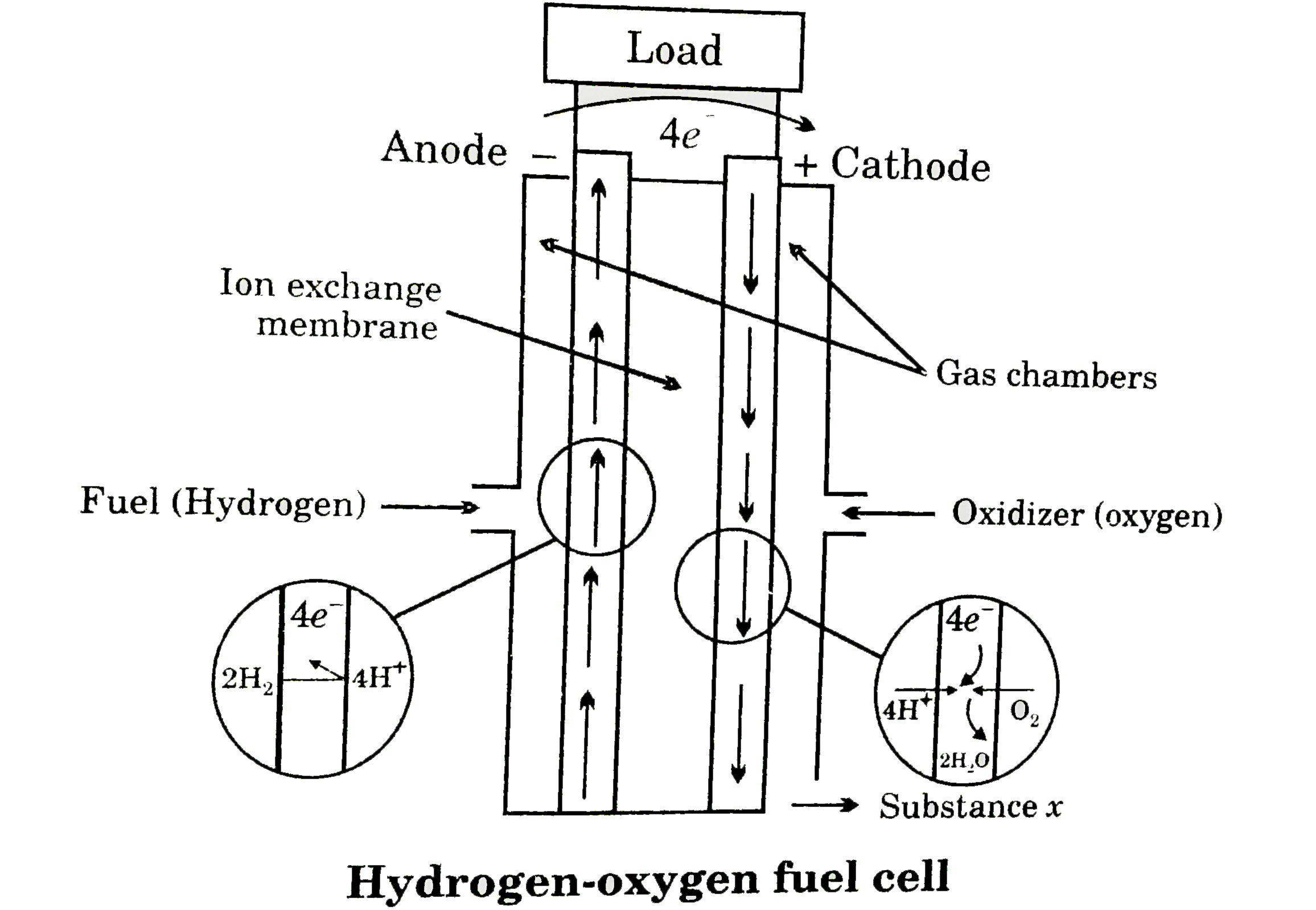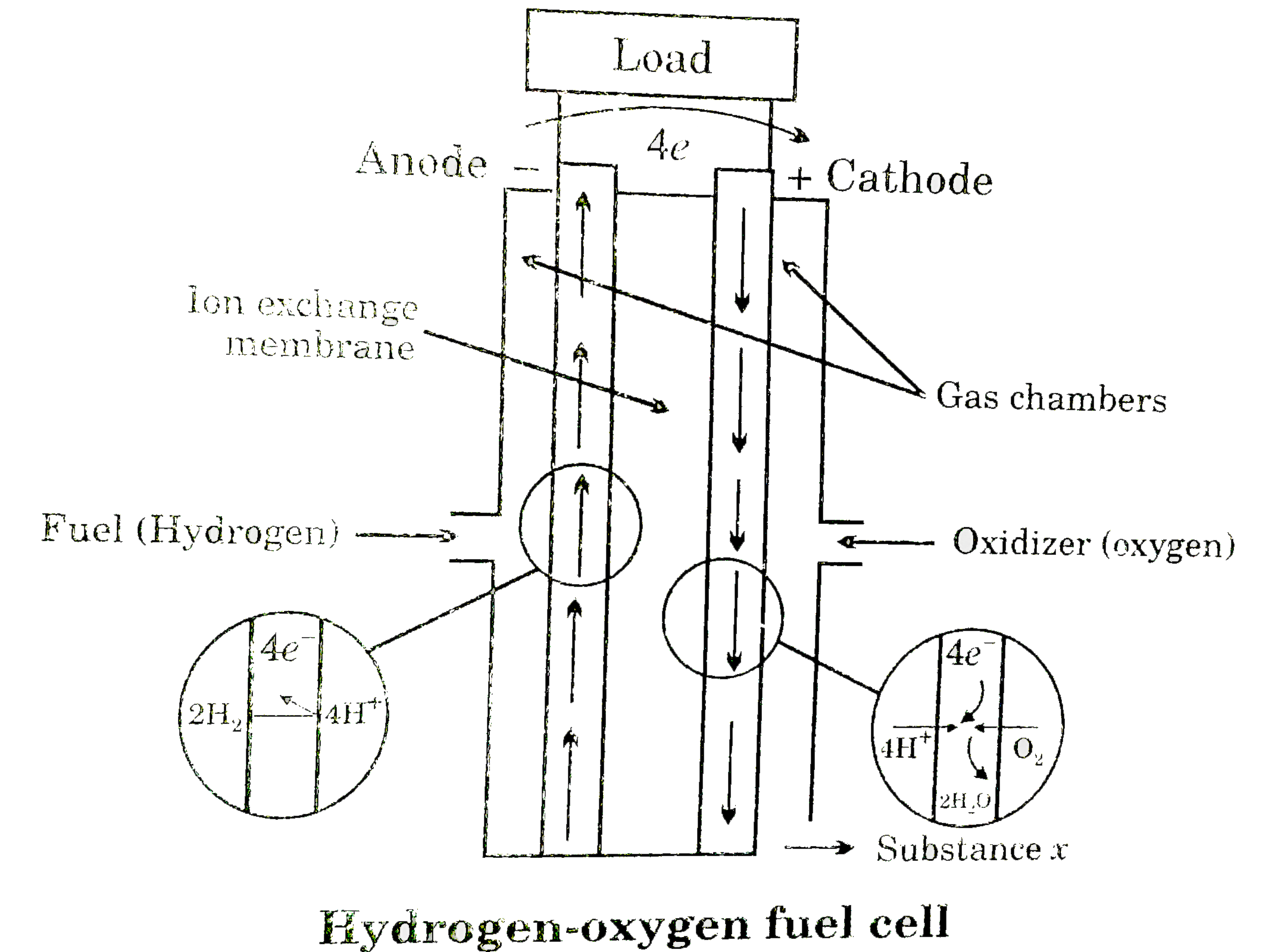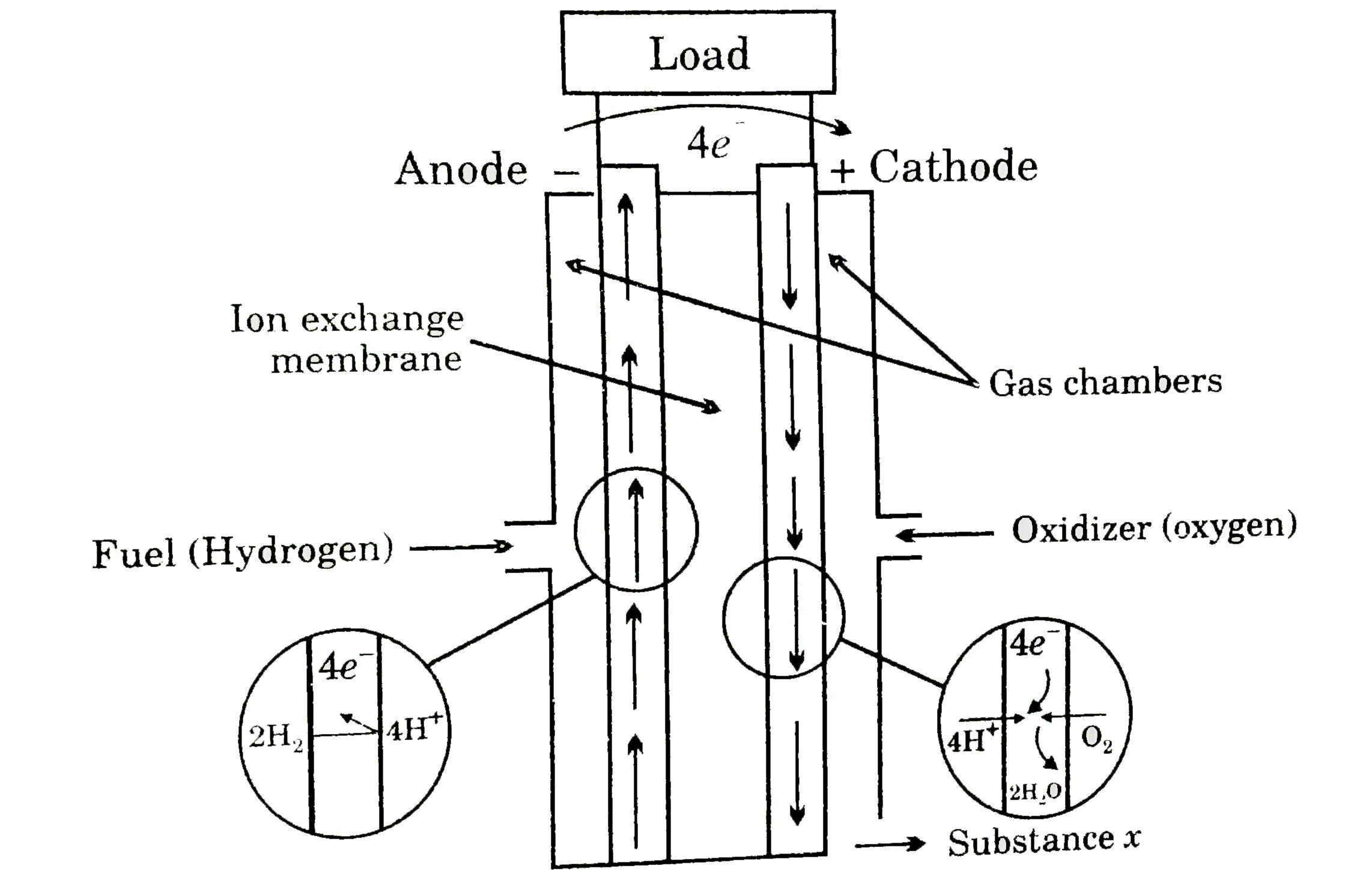A rocket is intended to leave the Earth's garvitational field.The fuel in its main engine is a little less than the amount that is necessary and an auxliary engine, (only capable of operating for a short time) has to be used as well.When is it best to switch on the auxiliary engine?
at take off
When the rocket has nearly stopped with respect to the Earth
It doesn't matter.
Can't say
The correct Answer is:A
Step by step video, text & image solution for A rocket is intended to leave the Earth's garvitational field.The fuel in its main engine is a little less than the amount that is necessary and an auxliary engine, (only capable of operating for a short time) has to be used as well.When is it best to switch on the auxiliary engine? by Physics experts to help you in doubts & scoring excellent marks in Class 11 exams.
Updated on:21/07/2023Topper's Solved these Questions
- SOLVD PAPERS 2017 NEET, AIIMS & JIPMERBOOK - DC PANDEYCHAPTER - SOLVD PAPERS 2017 NEET, AIIMS & JIPMEREXERCISE - Solved paper 2018(NEET)
22 Videos
- SOLVD PAPERS 2017 NEET, AIIMS & JIPMERBOOK - DC PANDEYCHAPTER - SOLVD PAPERS 2017 NEET, AIIMS & JIPMEREXERCISE - Solved paper 2018(AIIMS)
28 Videos
- SOLVD PAPERS 2017 NEET, AIIMS & JIPMERBOOK - DC PANDEYCHAPTER - SOLVD PAPERS 2017 NEET, AIIMS & JIPMEREXERCISE - Solved Papers 2017(AIIMS)
26 Videos
- SIMPLE HARMONIC MOTIONBOOK - DC PANDEYCHAPTER - SIMPLE HARMONIC MOTIONEXERCISE - Integer type questions
14 Videos
- SOUND WAVESBOOK - DC PANDEYCHAPTER - SOUND WAVESEXERCISE - Exercise 19.7
4 Videos
Similar Questions
Anoop Gaur started 'Cat's Eye', a company for providing cyber security solutions to businesses. Its objective to prevent, detect, respond to cyber attacks and protect critical data. He was a hardworking software engineer and an expert in cyber security. His reputation grew by leaps and bounds as he was not only a person of integrity but also did his work with almost honesty and sincerity. The business started growing day by day.
He was delighted when he was offered a big project by the Ministry of Science and Technology. While working on the project he found that the volume of work made it impractical for him to handle all the work by himself. Therefore he decided to expand the team. The company maintained a close liaision with an engineering college in the State. During a campus placement, Aarav and Pranshi were appointed to work for the new project.
He found the new employees capable, enthusiastic and trustworthy. Anoop Gaur was thus, able to focus on the objectives and with the help of Aarav and Pranshi, the object was completed on time. Not only this, Anoop Gaur was also able to extend his area of operations. On the other hand, Aarav and Pranshi also got opportunities to develop and exercise initiactive.
(a) Identify and explain briefly the concept used by Anoop Gaur in the above case which helped him in focussing on the objectives.
(b) Also, explain any four points of importance of the concept identified in part (a).
View SolutionA satellite of mass m is going around the earth in a circular orbital at a height R2 from the surface of the earth. The satellite has lived its life and a rocket, on board, is fired to ake it leave the gravity of the earth. The rocket remains active for a very small interval of time and imparts an impulse in the direction of motion of the satellite. Neglect any hange in mass due to firing of the rocket. Find the minimum impulse imparted by the rocket to the satellite. Find the minimum work done by the rocket engine. Mass of the earth = M, Radius of the earth = R
View Solution
Knowledge Check
A fuel cell is a cell that is continuously supplied with an oxidant and a reductant so that it can deliver a current indefinitely. Fuel cell offer the possibility of achieving high thermodynamic efficiency in the conversion of Gibbs energy into mechanical work. Internal combustion engines at best convert only the fraction (T2−T1)T2 of heat of combustion into mechanical work. While the thermodynamic efficiency of the fuel cell is give by, η=|ΔG||ΔH|, where ΔG is the Gibbs energy change for the cell reaction and ΔH is the enthalpy change of the cell reaction. This efficiency can be upto 80%-90% also in contrast to normal heat engine efficiency which are generally about 40%

Fuel cells may be classified according to the temperature range in wich they operate low temperature (25 to 100∘C), medium temperature (100 to 500∘C)), high temperature (500to1000∘C) and very high temperature is that catalyst for the various steps in the process are not so necessary. Polarization of a fuel cell reduces the current. Polarization is the result of slow reactions or processes such as diffusion in the cell. The figure indicates the construction of hydrogen-oxygen fuel cell with a solid electrolyte, which is an ion exchange membrane. The membrane is impermeable to the reactant gases, but is permeable to hydrogen ions, which carry the current between the electrodes. To facillitate the operation finely divided platinum that function as a catalyst. Water is drained out of the cell during operation. Fuel cells of this general type have been used successfully in the space program and are quite efficient. their disadvantages for large-scale commercial application are that hydrogen presetns storage problems, and platinum is an expensive catalyst. Cheaper catalysts have been found for higher temperature operatureof hydrogen-oxygen fuel cells. Fuel cells taht use hydrocarbons and air have been developed, but their power per unit weight is too low to make them practical in ordinary automobiles. Better catalysts are needed. A hydrogen-oxygen fuel cell may hae an acidic or alkaline electrolyte. The half-cell reactions are:
12O2(g)+2H++2e−→H2O(l)E∘=1.2288V
2H++2e−→H2(g)E∘=0
H2(g)+12O2(g)→H2O(l)E∘=1.2288V
or 12O2(g)+H2O(g)+2e−→2OH−E∘=0.4009V
2H2O(l)+2e−→H2(g)+2OH−E∘=−0.8279V
H2(g)+12O2(g)→H2O(l)E∘=1.2288V
To maximize the power per unit mass of an electrochemical cell, the electronic and electrolytic resistances of the cell must be minimized. than aqueous solutions, high-temperature electrochemical cells are of special interest for practical applications. High temperature also allow the use of liquid metal electrode, which makes possibel high current densities than solid electrodes.
The advantage of using fuel cell in a motorcar could be:Anon emission of harmful gasesBlight weightCfreedom from refuelingDlow initial costA fuel cell is a cell that is continuously supplied with an oxidant and a reductant so that it can deliver a current indefinitely. Fuel cell offer the possibility of achieving high thermodynamic efficiency in the conversion of Gibbs energy into mechanical work. Internal combustion engines at best convert only the fraction (T2−T1)T2 of heat of combustion into mechanical work. While the thermodynamic efficiency of the fuel cell is give by, η=|ΔG||ΔH|, where ΔG is the Gibbs energy change for the cell reaction and ΔH is the enthalpy change of the cell reaction. This efficiency can be upto 80%-90% also in contrast to normal heat engine efficiency which are generally about 40%

Fuel cells may be classified according to the temperature range in wich they operate low temperature (25 to 100∘C), medium temperature (100 to 500∘C)), high temperature (500to1000∘C) and very high temperature is that catalyst for the various steps in the process are not so necessary. Polarization of a fuel cell reduces the current. Polarization is the result of slow reactions or processes such as diffusion in the cell. The figure indicates the construction of hydrogen-oxygen fuel cell with a solid electrolyte, which is an ion exchange membrane. The membrane is impermeable to the reactant gases, but is permeable to hydrogen ions, which carry the current between the electrodes. To facillitate the operation finely divided platinum that function as a catalyst. Water is drained out of the cell during operation. Fuel cells of this general type have been used successfully in the space program and are quite efficient. their disadvantages for large-scale commercial application are that hydrogen presetns storage problems, and platinum is an expensive catalyst. Cheaper catalysts have been found for higher temperature operatureof hydrogen-oxygen fuel cells. Fuel cells taht use hydrocarbons and air have been developed, but their power per unit weight is too low to make them practical in ordinary automobiles. Better catalysts are needed. A hydrogen-oxygen fuel cell may hae an acidic or alkaline electrolyte. The half-cell reactions are:
12O2(g)+2H++2e−→H2O(l)E∘=1.2288V
2H++2e−→H2(g)E∘=0
H2(g)+12O2(g)→H2O(l)E∘=1.2288V
or 12O2(g)+H2O(g)+2e−→2OH−E∘=0.4009V
2H2O(l)+2e−→H2(g)+2OH−E∘=−0.8279V
H2(g)+12O2(g)→H2O(l)E∘=1.2288V
To maximize the power per unit mass of an electrochemical cell, the electronic and electrolytic resistances of the cell must be minimized. than aqueous solutions, high-temperature electrochemical cells are of special interest for practical applications. High temperature also allow the use of liquid metal electrode, which makes possibel high current densities than solid electrodes.
If 567.5 mL of H2 gas at STP is fed into and is consumed by the cell in 10minutes, then what is the current output (in A) of the fuel cell?A4AB8AC16AD12AA fuel cell is a cell that is continuously supplied with an oxidant and a reductant so that it can deliver a current indefinitely. Fuel cell offer the possibility of achieving high thermodynamic efficiency in the conversion of Gibbs energy into mechanical work. Internal combustion engines at best convert only the fraction (T2−T1)T2 of heat of combustion into mechanical work. While the thermodynamic efficiency of the fuel cell is give by, η=|ΔG||ΔH|, where ΔG is the Gibbs energy change for the cell reaction and ΔH is the enthalpy change of the cell reaction. This efficiency can be upto 80%-90% also in contrast to normal heat engine efficiency which are generally about 40%

Fuel cells may be classified according to the temperature range in wich they operate low temperature (25 to 100∘C), medium temperature (100 to 500∘C)), high temperature (500to1000∘C) and very high temperature is that catalyst for the various steps in the process are not so necessary. Polarization of a fuel cell reduces the current. Polarization is the result of slow reactions or processes such as diffusion in the cell. The figure indicates the construction of hydrogen-oxygen fuel cell with a solid electrolyte, which is an ion exchange membrane. The membrane is impermeable to the reactant gases, but is permeable to hydrogen ions, which carry the current between the electrodes. To facillitate the operation finely divided platinum that function as a catalyst. Water is drained out of the cell during operation. Fuel cells of this general type have been used successfully in the space program and are quite efficient. their disadvantages for large-scale commercial application are that hydrogen presetns storage problems, and platinum is an expensive catalyst. Cheaper catalysts have been found for higher temperature operatureof hydrogen-oxygen fuel cells. Fuel cells taht use hydrocarbons and air have been developed, but their power per unit weight is too low to make them practical in ordinary automobiles. Better catalysts are needed. A hydrogen-oxygen fuel cell may hae an acidic or alkaline electrolyte. The half-cell reactions are:
12O2(g)+2H++2e−→H2O(l)E∘=1.2288V
2H++2e−→H2(g)E∘=0
H2(g)+12O2(g)→H2O(l)E∘=1.2288V
or 12O2(g)+H2O(g)+2e−→2OH−E∘=0.4009V
2H2O(l)+2e−→H2(g)+2OH−E∘=−0.8279V
H2(g)+12O2(g)→H2O(l)E∘=1.2288V
To maximize the power per unit mass of an electrochemical cell, the electronic and electrolytic resistances of the cell must be minimized. than aqueous solutions, high-temperature electrochemical cells are of special interest for practical applications. High temperature also allow the use of liquid metal electrode, which makes possibel high current densities than solid electrodes.
For a hydrogen-oxygen fuel cell if ΔH2f(H2O,l)=−285kJ/mo≤, then what will be its thermodynamic efficiency under standard conditions (use data given in the passage if required)?A0.91B0.41C0.63D0.83
Anoop gaur started cat's eye a companuy for providng cyber security solution to businesses it s objective was to prevent detect respond to cyber attacks and protesct ciritical data he was a hardwroking software engineering and an expert in cyber security his reputation grew by leaps and bounds as he ws nopt only a person of intergirty but alos did his work with utmost honestly and sincerity the business started growing day to day
He was delighted when when he was offered a big project by the ministry of science and technology while working on the project he found that the volume of work made it impractical for him to handle all the work by himself therefore he decide to expand the team the company maintained a close liasioson with an engineering collage in the state during compusplacement arav and panrshi wiere appointed to work for the new project
He found the new employee capables enhusisastic and trustworthy anoop gaour was thus able fo foucus on the objectives and with the help of array and pranshi the project was completed on time not only this anoop gaur was also able to extend his area of operation on the hand arav and pranshi also got opportunities to develop and exercise initative
(a) idnetify and briefly explain the concept used by anoop[ gaur in the case which helped him in foucusing on objective
(b) also explain any your points of importantance of the concept indentified in part (a).
View Solution1. At a time when the use of fossil fuels to the power vehicles is making the environmentalists angry, an alternative source of fuel the bio-diesel' has emerged as a useful solution. Additionally, its use solves a disposal problem.
2. The fuel is nothing but use of vegetable oil which has been tested satisfactorily. It has made a vehicle called the VEGGIE van (a motor home) run more than 16,000 km across the United States. Also it has visited 20 major various restaurants in America and the bio-diesel was used along the entire journey. The novel experiment was started as a college project by two students Joshua and Kaia. It eventually ended in a massive awareness programme.
3. The idea of using vegetable oil as fuel for a diesel engine first occurred to them when they visited a traditional farm in picturesque southern Germany where vehicles fuelled by vegetable oil were in use. While studying agriculture and living on these farms, they noticed that farmers were always filling tanks with a yellow liquid. "This fuel came from the canola plants which grow on our farms and nearby areas. We put in the diesel and it smells good," farmers said.
4. The process of converting vegetable oil into bio-diesel fuel is cheap and easy to find. Any vegetable oil, such as used cooking oil, methanol or clear alcohol can be used as fuel. The diesel engine which is being used, however, can run on altered vegetable oil or bio-diesel requires zero modifications to the engine. This fuel works either by itself or blended with petroleum diesel. Bio-diesel has since been recognized as an official alternative fuel in the US. Its use by the bus and truck fleet has soared by more than 1000 percent.
Name given to the vehicle that first used this fuel _____
View SolutionA fuel cell is a cell that is continuously supplied with an oxidant and a reductant so that it can deliver a current indefinitely. Fuel cell offer the possibility of achieving high thermodynamic efficiency in the conversion of Gibbs energy into mechanical work. Internal combustion engines at best convert only the fraction (T2−T1)T2 of heat of combustion into mechanical work. While the thermodynamic efficiency of the fuel cell is give by, η=|ΔG||ΔH|, where ΔG is the Gibbs energy change for the cell reaction and ΔH is the enthalpy change of the cell reaction. This efficiency can be upto 80%-90% also in contrast to normal heat engine efficiency which are generally about 40%

Fuel cells may be classified according to the temperature range in wich they operate low temperature (25 to 100∘C), medium temperature (100 to 500∘C)), high temperature (500to1000∘C) and very high temperature is that catalyst for the various steps in the process are not so necessary. Polarization of a fuel cell reduces the current. Polarization is the result of slow reactions or processes such as diffusion in the cell. The figure indicates the construction of hydrogen-oxygen fuel cell with a solid electrolyte, which is an ion exchange membrane. The membrane is impermeable to the reactant gases, but is permeable to hydrogen ions, which carry the current between the electrodes. To facillitate the operation finely divided platinum that function as a catalyst. Water is drained out of the cell during operation. Fuel cells of this general type have been used successfully in the space program and are quite efficient. their disadvantages for large-scale commercial application are that hydrogen presetns storage problems, and platinum is an expensive catalyst. Cheaper catalysts have been found for higher temperature operatureof hydrogen-oxygen fuel cells. Fuel cells taht use hydrocarbons and air have been developed, but their power per unit weight is too low to make them practical in ordinary automobiles. Better catalysts are needed. A hydrogen-oxygen fuel cell may hae an acidic or alkaline electrolyte. The half-cell reactions are:
12O2(g)+2H++2e−→H2O(l)E∘=1.2288V
2H++2e−→H2(g)E∘=0
H2(g)+12O2(g)→H2O(l)E∘=1.2288V
or 12O2(g)+H2O(g)+2e−→2OH−E∘=0.4009V
2H2O(l)+2e−→H2(g)+2OH−E∘=−0.8279V
H2(g)+12O2(g)→H2O(l)E∘=1.2288V
To maximize the power per unit mass of an electrochemical cell, the electronic and electrolytic resistances of the cell must be minimized. than aqueous solutions, high-temperature electrochemical cells are of special interest for practical applications. High temperature also allow the use of liquid metal electrode, which makes possibel high current densities than solid electrodes.
Why are fuel cells not being used in daily life depite their very high efficiency?
View SolutionA fuel cell is a cell that is continuously supplied with an oxidant and a reductant so that it can deliver a current indefinitely. Fuel cell offer the possibility of achieving high thermodynamic efficiency in the conversion of Gibbs energy into mechanical work. Internal combustion engines at best convert only the fraction (T2−T1)T2 of heat of combustion into mechanical work. While the thermodynamic efficiency of the fuel cell is give by, η=|ΔG||ΔH|, where ΔG is the Gibbs energy change for the cell reaction and ΔH is the enthalpy change of the cell reaction. This efficiency can be upto 80%-90% also in contrast to normal heat engine efficiency which are generally about 40%

Fuel cells may be classified according to the temperature range in wich they operate low temperature (25 to 100∘C), medium temperature (100 to 500∘C)), high temperature (500to1000∘C) and very high temperature is that catalyst for the various steps in the process are not so necessary. Polarization of a fuel cell reduces the current. Polarization is the result of slow reactions or processes such as diffusion in the cell. The figure indicates the construction of hydrogen-oxygen fuel cell with a solid electrolyte, which is an ion exchange membrane. The membrane is impermeable to the reactant gases, but is permeable to hydrogen ions, which carry the current between the electrodes. To facillitate the operation finely divided platinum that function as a catalyst. Water is drained out of the cell during operation. Fuel cells of this general type have been used successfully in the space program and are quite efficient. their disadvantages for large-scale commercial application are that hydrogen presetns storage problems, and platinum is an expensive catalyst. Cheaper catalysts have been found for higher temperature operatureof hydrogen-oxygen fuel cells. Fuel cells taht use hydrocarbons and air have been developed, but their power per unit weight is too low to make them practical in ordinary automobiles. Better catalysts are needed. A hydrogen-oxygen fuel cell may hae an acidic or alkaline electrolyte. The half-cell reactions are:
12O2(g)+2H++2e−→H2O(l)E∘=1.2288V
2H++2e−→H2(g)E∘=0
H2(g)+12O2(g)→H2O(l)E∘=1.2288V
or 12O2(g)+H2O(g)+2e−→2OH−E∘=0.4009V
2H2O(l)+2e−→H2(g)+2OH−E∘=−0.8279V
H2(g)+12O2(g)→H2O(l)E∘=1.2288V
To maximize the power per unit mass of an electrochemical cell, the electronic and electrolytic resistances of the cell must be minimized. than aqueous solutions, high-temperature electrochemical cells are of special interest for practical applications. High temperature also allow the use of liquid metal electrode, which makes possibel high current densities than solid electrodes.
What is the substance X taken out at bottom of the fuel cell shown in the figure?
View SolutionSupernova refer to the explosion of a massive star. The material in the central case of such a star continues to collapse under its own gravitational pull. If mass of the core is less is than 1.4 times the mass of sun, its collapse finally results in a white dwarf star. However, if the core has a mass greater than this, it could end up soon as a neutron. star and if its mass is more than about three solar masses, the collapse may still continue till the star becomes a very small object with an extremely high value of density called a 'Black hole'. Escape speed for a black hole is very large. The figure shows a block hole of radius R and another concentric sphere of radius RS, called the 'Schwarzschild Radius'. It is the critical radius at which escape speed equals the speed of light c. Nothing even the light, can escape from within the sphere of Radius RS. So light from a black hole can not escape and hence the terminology 'black hole'. There has been astronomical evidence of a small and massive object at the centre of our galaxy the 'Milky way'. Suppose that there is a particle at a distance about 6 light years. that orbits this massive object with an orbital speed of about 2×105m/s. Use the given data whereever necessary and answer the questions that hollow. G=6.67×10−11N−m2/kg2, Solar mass M=2×1030kg,C=3×108m/s,1 light year =9.5×1015m.

If mass of earth ME≈6×1024kg and its radius RE=6400km, to what fraction of its presents radius does the earth need to be compressed in order to become a black hole ?
(Give only the order of your answer)
View Solution
